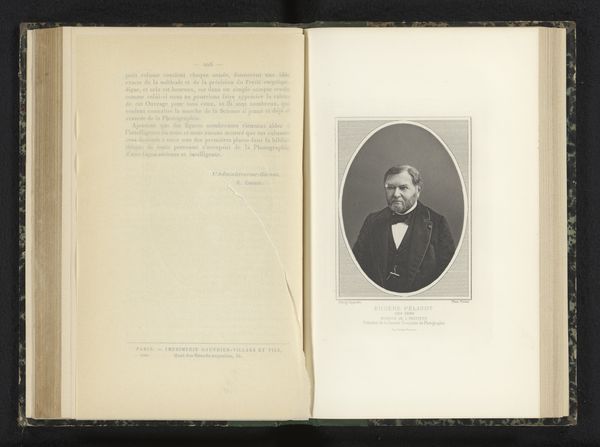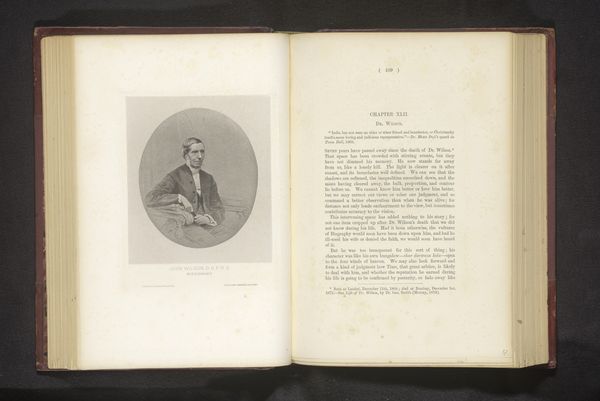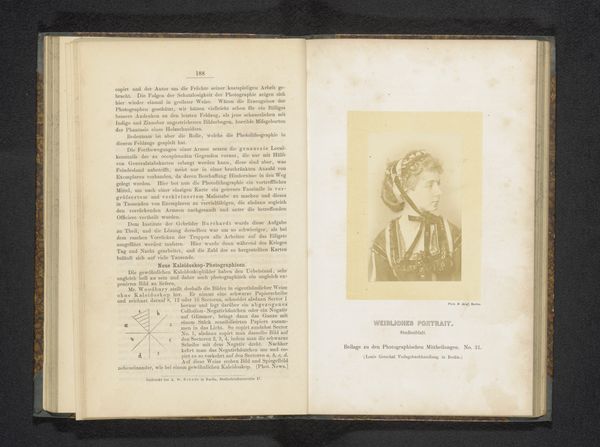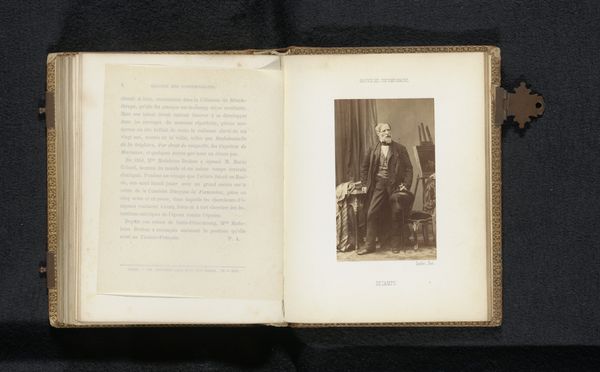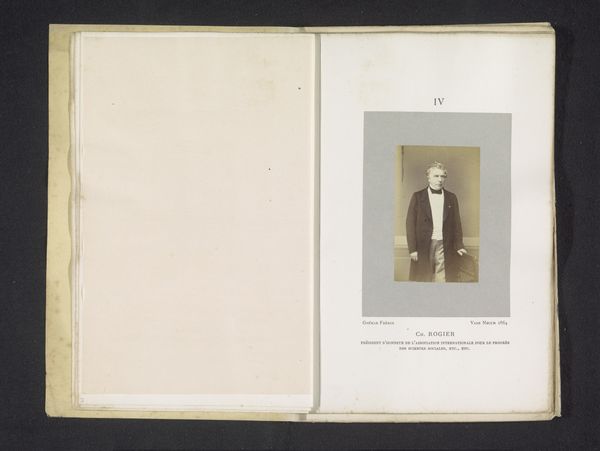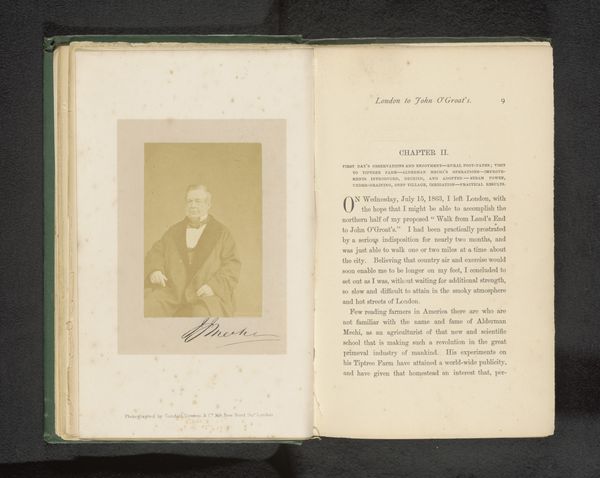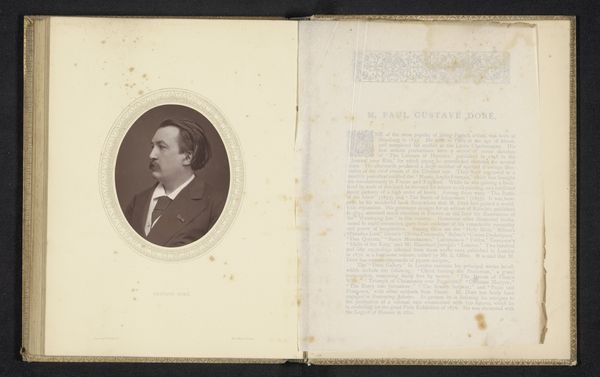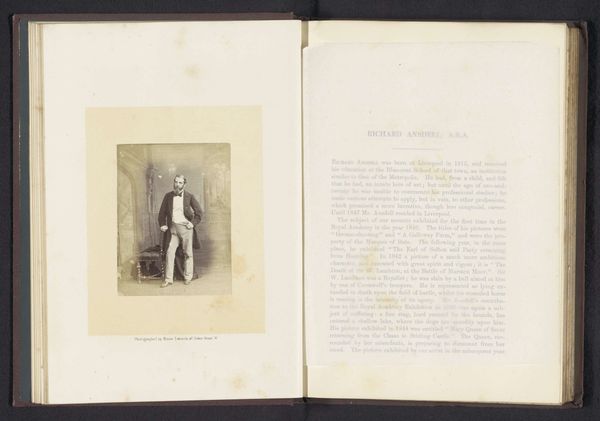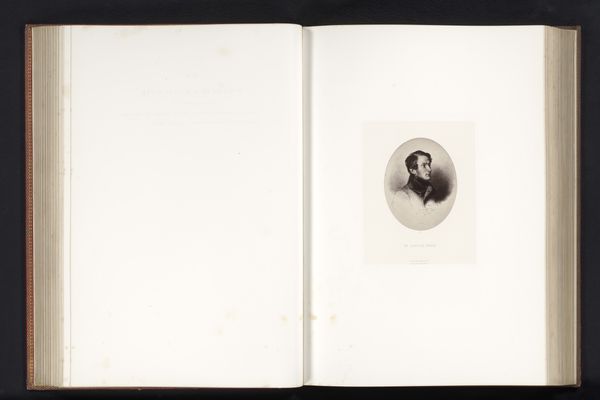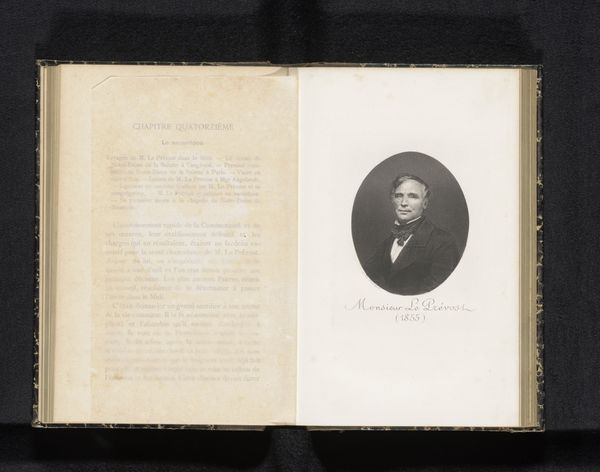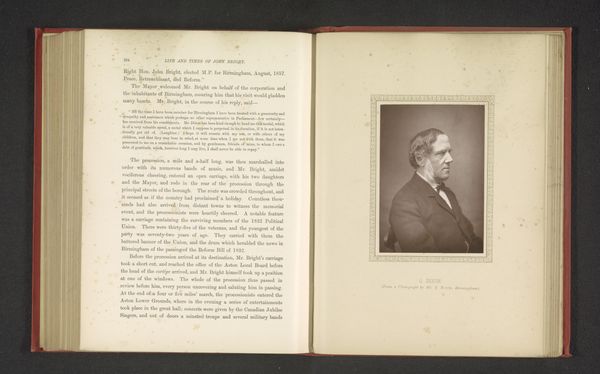
paper
#
portrait
#
aged paper
#
paperlike
#
personal journal design
#
paper
#
journal
#
stylized text
#
thick font
#
academic-art
#
letter paper
#
paper medium
#
historical font
#
columned text
Dimensions: height 142 mm, width 103 mm
Copyright: Rijks Museum: Open Domain
Curator: Here we have an image of a book opened to a portrait of Henry Lewis Baugher, likely made before 1882 by William H. Tipton. It’s printed on paper. Editor: My immediate reaction is that this book has a wonderfully antique aura! The faded sepia tones and textured pages suggest it's been handled and treasured for many, many years. Curator: Indeed! Books often serve as repositories of memory and legacy. Presenting Baugher within the pages lends an aura of authority, almost enshrining him and his knowledge. Editor: Absolutely. Thinking about the paper itself, the labour involved in its making, the printing press used for the text, the photographic process that rendered Baugher’s likeness – it's all testament to the technologies available at the time, and how knowledge was meticulously constructed and disseminated. Curator: Look closely at the portrait's oval frame. Ovals frequently represent an enclosed world, implying refinement and sophistication. It directs our attention specifically to Baugher, almost removing him from tangible space and placing him within the realm of idealized intellect. Editor: I’m also struck by the contrast in textures. On one side, densely printed columns create this textured, almost woven, pattern. And then on the right side, Baugher’s smooth, slightly faded visage creates something ethereal. One page represents written record and the other a material attempt to freeze an ephemeral moment in time, to memorialize somebody. Curator: And the typeface! The antiquated font echoes not only the historical period but also the formality associated with academic or scholarly work. Notice how it is carefully laid out; this conveys order and reasoned thought. Editor: Thinking of it practically, it begs the question—was the book made specifically to showcase his portrait or was this portrait included amongst other texts? Were multiple copies created and disseminated or was it created solely for intimate relations and personal admiration? Curator: It’s compelling to consider what symbols might lie hidden, accessible to a learned viewer during the period, and largely obscured from us today. Editor: Examining it this way underscores how materials are more than inert substances. They are active participants in how we construct knowledge. Thanks to this combination of book-making, and printing of photographs we see this construction as a means to solidify a social figure's relevance to posterity.
Comments
No comments
Be the first to comment and join the conversation on the ultimate creative platform.

